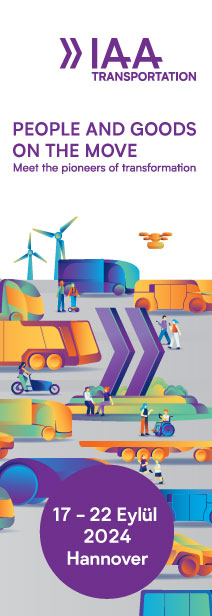Commercial vehicles (CV) are the economic backbone of the markets they serve. And in this role, CV manufacturers and their customers need sustainable solutions. They need improvements in vehicle efficiency that deliver for both the environment and the bottom line. They need enhancements to the in-cabin user experience that will help keep drivers safe, and improve comfort in their “home away from home.” They need the extra set of eyes provided by advanced safety and connected fleet solutions. Above all else, they need reliable technology that keeps their vehicles in the field.
These solutions for a greener, safer and more connected CV industry not only make sound business sense, but are coming to a head with emerging legislation in these areas.
Driving vehicle efficiency
With fuel costs making up nearly 40% of operating costs, vehicle efficiency continues to be a powerful force in the industry. In fact, given high utilization and long service lives, investments in improved fuel economy can be a major competitive advantage. For example, in a typical class 8 truck, a 20% improvement in fuel economy can save $14,000 to $25,000 per year with paybacks possible within the first year.
And given the continued societal focus on emissions – particularly in congested urban centers – authorities worldwide are prioritizing more rigorous environmental control and taking action at the local, national and international level.
For example, the introduction of a new Ultra Low Emission Zone (ULEZ) in London will charge commercial vehicles that do not meet the required standards a hefty £100 (US$125) a day to drive into the heart of the UK’s capital city. The Paris Accord is also a catalyst for change in Europe, with heavy-duty vehicles accounting for approximately 25% of CO2 emissions from road transport in the EU, and 6% of total EU emissions. Consequently, the European Commission has enacted Regulation 2019/1242. This took effect on August 14, 2019, and set the first ever EU-wide CO2 standard for heavy-duty vehicles.
In the United States, the Environmental Protection Agency (EPA) is leading the Cleaner Trucks Initiative (CTI) to update standards for emissions from heavy-duty highway trucks and engines. With expectations that heavy-duty trucks will be responsible for one-third of nitrogen oxide (NOx) emissions from transportation in 2025, the EPA looks to update these standards to help meet National Ambient Air Quality Standards for ozone and particulate matter. 1
These new regulations, combined with growing environmental concerns from consumers, are resulting in an emphasis on electrification – which will ultimately lower fuel costs for operators.











